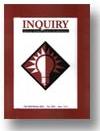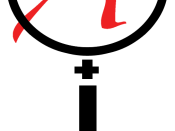In todayÃÂs business world, the decisions made by the organizations can affect employees and customers. Making the right choices and implementing the proper policies and procedures that guide the organization are the result of the business using critical thinking practices. Using the steps of critical thinking to assess a potential process or procedure can help in determining any possible failures or barriers beforehand. The following scenario discusses how the Baker Hughes INTEQ Marketing Communications Director had to use critical thinking with the potential rehire of an employee.
Identification of the ProblemThe first step in critical thinking is to identify the problem. ÃÂThe first condition (critical thinking) is having something to think about such as a person, an object, a situation, problem or processÃÂ (Rudd, 2007, p.46). A former technical writer for INTEQ had revealed to another employee she was leaving the company to work for another but was not giving notice until after the bonuses were rewarded.
She further added that she was leaving based on her loathing for the Marketing Communications Manager to whom she reported. As fate would have it, the next day her father had a stroke and she had to leave the company early to care for him. The fact that she had also taken the position with the other company after she had left was not revealed until a year later when she called the manager at INTEQ wanting her job back. When the employee whom she had confided her intentions of leaving before found out that the former employee wanted her job back, the employee reported to the Marketing Communications Director the events upon the former employeeÃÂs departure. The problem was that the group needed an experienced qualified technical writer, but ethically, should they rehire this employee based on her actions upon leaving.
Analyzing the EvidenceThe next step was to analyze all the evidence presented and determine if the former employees actions were significant reasons to not rehire her. Paul & Elder (2006) stated ÃÂTo assess thinking: Check it for clarity, accuracy, precision, relevance, depth, breadth, significance, logic, and fairnessÃÂ (Introduction, p. xxiii). The questions that needed to be resolved were: Did the employee break any company policies by not revealing her intentions of leaving? Did the employee commit an infraction based on the company Code of Ethics? Was the need for a technical writer greater than the actions of the former employeeÃÂs departure?Based on the questions posed, the results were that no policies had been broken because the employee had left the company to care for her father which was true. The evidence revealed however, that the employee had indeed taken the position with the other company after her departure. The comments about her feelings in regard to the manager and her initial plan to leave once she received her bonus were then considered based on ethical principles. Finally, her experience and qualifications as a technical writer were hard to find.
Resolving the ProblemAfter assessing all the facts and weighing the pros and cons of the problem, the resolution was not to rehire the employee based on the unethical actions upon her leaving the company. The determining factor was if she had left before because of her feelings towards her manager, she may leave again if she found another employment opportunity. The feeling was that the employee needed the job because she could not find other employment so her request to return was not because of company loyalty but one of desperate need. ÃÂFinally, an assessment of the conclusions is drawn with emphasis on implications and consequences of the decisions reached as a result of the thinking processÃÂ (Rudd, 2007, p.48).
ConclusionCritical thinking involves the process of identification, analysis and resolution of problems that organizations face each day. Whether to determine the validity of a policy or the structure of the company, the thought process needs to be intense and thorough in order to prevent problems that may arise later. In the scenario discussed previously, the uncertainty of the former employeeÃÂs intentions and trustworthiness was evaluated and because of previous actions, the determination not to rehire was the result.
ReferencesPaul, R., & Elder, L. (2006). Critical thinking: tools for taking charge of your learning and your life. [University of Phoenix Custom Edition e-text]. Columbus, Ohio: Pearson - Prentice Hall. Retrieved July 3, 2008, from University of Phoenix, MGT350-Critical Thinking: Strategies in Decision Making Web site.
Rudd, R. (2007). Defining critical thinking - find more like this. Techniques: Connecting Education & Careers, 82 (7), p.46-49 . Retrieved July 3, 2008, from EBSCO Host database.


